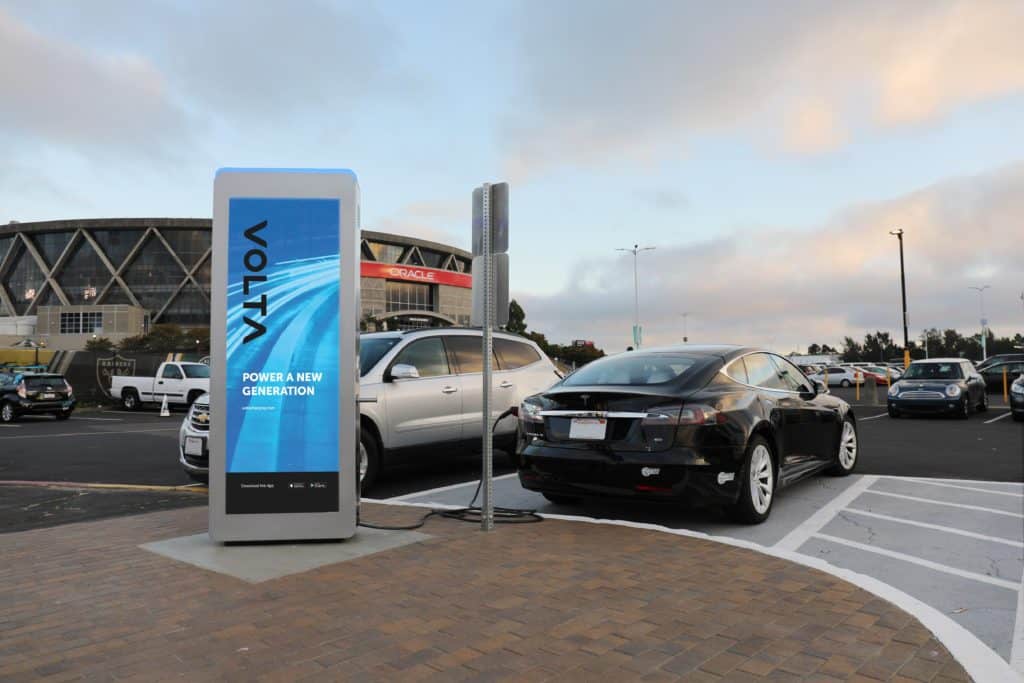
A new study finds that electric vehicles (EVs) and their charging stations are poised to see explosive growth over the next decade.
At the same time, utilities, car companies, and other businesses are pursuing a variety of charging strategies — many of which will be very cheap and possibly even free for consumers.
By 2030, EVs are projected to comprise 11 percent of the new car market, with up to 40 million charging points worldwide, according to a new study by Greentech Media (GTM), a division of Wood Mackenzie.
So power demand for EV charging will soar, led by China, North America, and Europe.
To reach this kind of exponential growth in charging infrastructure, GTM explains, “utilities, along with manufacturers, oil and gas giants and sector-specific specialists, will need to test new business models.”
One of the most innovative business models comes from a U.S. startup, Volta Charging, which bills itself as “the largest free electric car charging network in the US.” It has raised nearly $60 million to create an EV charging network that shows video ads, providing revenue designed to allow free charging for customers.
So far “sponsored stations have delivered over 22 million free electric miles,” the company says, “saving over 9 million pounds of CO2.”
As of March, most public EV charging stations are free according to PlugInCars.com. There are 47,000 free public stations and only some 40,000 that require payment.
One reason why such deals are possible is that electric cars are so highly efficient — and clean energy is dropping in price so rapidly — that EV charging costs are already a fraction of the cost of fueling a gasoline car.
Many utilities already offer low rates for charging EVs at night because they have considerable excess generation capacity then, which otherwise makes them no money.
But, increasingly, states like California are also getting excess power during the daytime from all the cheap solar panels. As solar gets even cheaper — and spreads more widely — more and more places will have excess low-cost carbon-free power during the day.
So daytime charging will become cheaper and cheaper.
Finally, many car companies and utilities are partnering on so-called vehicle-to-grid (V2G) trials to help integrate more renewables into the electric grid. In V2G, customers get rewarded if they give utilities some control over the batteries in their EVs — charging from the grid during the sunniest part of the day, and then discharging back to the grid during a time of high demand in return for a credit.
As Bloomberg has reported, some EV owners have earned $1,500 a year in these V2G trials — more than most EV owners will pay for charging their car during an entire year.
By 2025, V2G could turn EVs in California alone into “the equivalent of $12.8–$15.4 billion in stationary storage investment,” according to a May study from Lawrence Berkeley National Laboratory.
The future is electric cars — and cheap charging.
